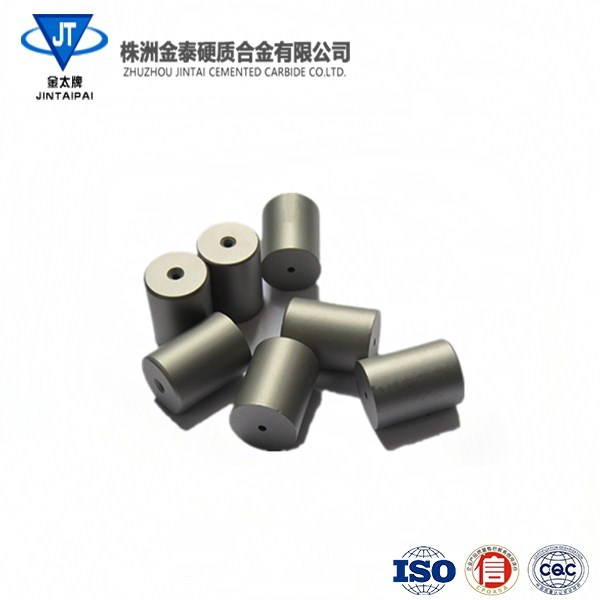Hard alloy is an alloy primarily composed of one or several refractory carbides (such as tungsten carbide, titanium carbide, etc.) in powder form, with metal powders (such as cobalt, nickel) serving as the binder. It is manufactured through the powder metallurgy process. Hard alloy is mainly used for manufacturing high-speed cutting tools and cutting tools for hard and tough materials. It is also employed in the production of cold working dies, precision gauges, and highly wear-resistant components that are resistant to impact and vibration.

▌ Characteristics of Hard Alloy
(1)?High hardness, wear resistance, and red hardness.
Hard alloy exhibits a hardness of 86-93 HRA at room temperature, which is equivalent to 69-81 HRC. It maintains high hardness at temperatures of 900-1000°C and possesses excellent wear resistance. Compared to high-speed tool steel, hard alloy enables cutting speeds that are 4-7 times higher and has a lifespan that is 5-80 times longer. It can cut through hard materials with a hardness of up to 50HRC.
(2)?High strength and high elastic modulus.
Hard alloy has a high compressive strength of up to 6000 MPa and an elastic modulus ranging from (4-7) × 10^5 MPa, both higher than those of high-speed steel. However, its flexural strength is relatively lower, typically ranging from 1000-3000 MPa.
(3)?Excellent corrosion resistance and oxidation resistance.
Hard alloy generally exhibits good resistance to atmospheric corrosion, acids, alkalis, and is less prone to oxidation.
(4)?Low coefficient of linear expansion.
Hard alloy maintains stable shape and dimensions during operation due to its low coefficient of linear expansion.
(5)?Shaped products do not require additional machining or regrinding.
Due to its high hardness and brittleness, hard alloy does not undergo further cutting or regrinding after powder metallurgy forming and sintering. If additional processing is required, methods such as electrical discharge machining, wire cutting, electrolytic grinding, or specialized grinding with grinding wheels are employed. Typically, hard alloy products of specific dimensions are brazed, bonded, or mechanically clamped onto tool bodies or mold bases for use.
▌ Common Types of Hard Alloy
Common hard alloy types are classified into three categories based on composition and performance characteristics: tungsten-cobalt, tungsten-titanium-cobalt, and tungsten-titanium-tantalum (niobium) alloys. The most widely used in production are tungsten-cobalt and tungsten-titanium-cobalt hard alloys.
(1)?Tungsten-Cobalt Hard Alloy:
The primary components are tungsten carbide (WC) and cobalt. The grade is denoted by the code "YG", followed by the percentage of cobalt content. For example, YG6 indicates a tungsten-cobalt hard alloy with 6% cobalt content and 94% tungsten carbide content.
(2)?Tungsten-Titanium-Cobalt Hard Alloy:
The primary components are tungsten carbide (WC), titanium carbide (TiC), and cobalt. The grade is denoted by the code "YT", followed by the percentage of titanium carbide content. For example, YT15 indicates a tungsten-titanium-cobalt hard alloy with 15% titanium carbide content.
(3)?Tungsten-Titanium-Tantalum (Niobium) Hard Alloy:
This type of hard alloy is also known as a universal hard alloy or versatile hard alloy. The main components are tungsten carbide (WC), titanium carbide (TiC), tantalum carbide (TaC), or niobium carbide (NbC), and cobalt. The grade is denoted by the code "YW" (the initials of "Ying" and "Wan," meaning hard and universal in Chinese), followed by a numeral.
▌ Applications of Hard Alloy
(1)?Cutting Tool Materials:
Hard alloy is widely used in the production of cutting tool materials, including turning tools, milling cutters, planer blades, drills, etc. Tungsten-cobalt hard alloys are suitable for short chip machining of ferrous and non-ferrous metals, such as cast iron, cast brass, and composite wood. Tungsten-titanium-cobalt hard alloys are suitable for long chip machining of steel and other ferrous metals. Among the alloys, those with higher cobalt content are suitable for rough machining, while those with lower cobalt content are suitable for finishing. Universal hard alloys have significantly longer tool life when machining difficult-to-cut materials like stainless steel.
(2)?Mold Materials:
Hard alloy is commonly used as a material for cold drawing dies, cold stamping dies, cold extrusion dies, and cold heading dies.
Hard alloy cold heading dies are subjected to wear under impact or strong impact conditions. The key properties required are good impact toughness, fracture toughness, fatigue strength, bending strength, and excellent wear resistance. Typically, medium to high cobalt content and medium to coarse-grained alloys are selected. Common grades include YG15C.
Generally, there is a trade-off between wear resistance and toughness in hard alloy materials. Improving wear resistance will result in decreased toughness, while enhancing toughness will inevitably lead to reduced.
If the selected brand is easy to produce early cracking and damage in use, it is appropriate to choose a brand with higher toughness; If the selected brand is easy to produce early wear and damage in use, it is appropriate to choose a brand with higher hardness and better wear resistance. The following grades: YG15C, YG18C, YG20C, YL60, YG22C, YG25C from left to right, the hardness is reduced, the wear resistance is reduced, the toughness is improved; On the contrary, the opposite is true.
(3) Measuring tools and wear-resistant parts
Tungsten carbide is used for abrasive surface inlays and parts of measuring tools, precision bearings of grinding machines, guides and guide bars of centerless grinding machines, and wear-resistant parts such as lathe centers.
Post time: Aug-02-2023












